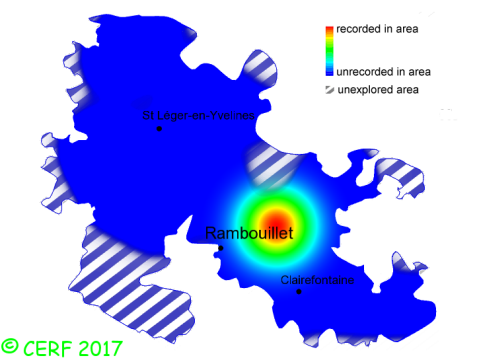|
Tubaria dispersa (Pers.) Singer
|
common name(s) : Hawthorn Twiglet
New classification: Basidiomycota/Agaricomycotina/Agaricomycetes/Agaricomycetidae/Agaricales/Inocybaceae
Former classification: Basidiomycota/Homobasidiomycetes/Agaricomycetideae/Cortinariales/Crepidotaceae
synonyms: Tubaria autochtona
(unconfirmed synonyms: Tubaria autochthona)
edibility : unknown edibility
|
|
|
The cap is pale yellow to ochre buff, convex then flattened; its margin is striate when moist, with white veil remnants.
The cap surface is smooth, not viscid nor sticky.
The stem is flaky-fibrillose, without ring.
The flesh is whitish, unchanging; its taste is faint; the odour is weak or not distinctive;
its texture is fibrous.
The gills are pale lemon yellow then ochre, adnate, distant (nb of gills per 90° ~ 12 ).
The spore print is pale ochre. This species is saprophytic.
It grows on the ground, in hedges, parks et gardens, on rotting fruits of shrubs of the rose family, in particular with hawthorn.
The fruiting period takes place from May to November.
| Dimensions: | width of cap approximately 1.5 cm (between 0.5 and 3 cm) |
| | height of stem approximately 3 cm (between 1.5 and 5 cm) |
| | thickness of stem (at largest section) approximately 1.5 mm (between 1 and 3 mm) |
Distinctive features : gills yellow at first; matt top of cap, not hygrophanous; in hedges, especially under hawthorns
Tubaria dispersa is rare and confined in the forest of Rambouillet, and is occasional, more generally speaking
.
|  | | Above : distribution map of Tubaria dispersa in the forest of Rambouillet |
|
page updated on 14/01/18